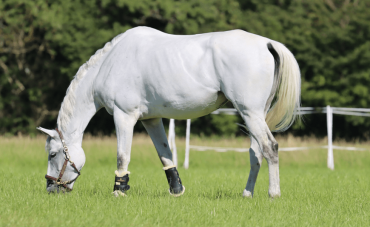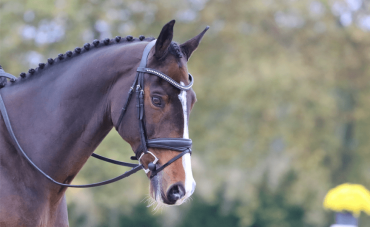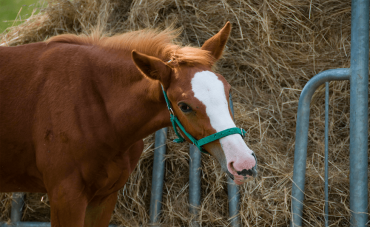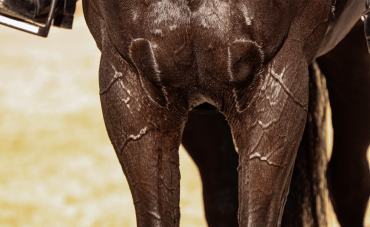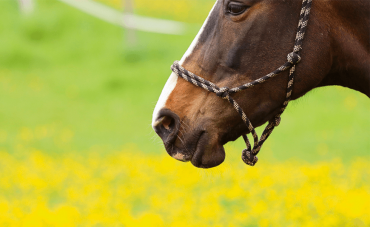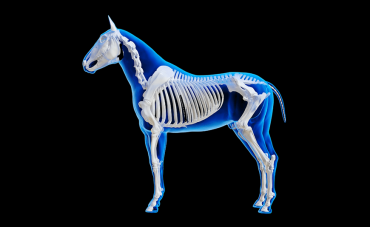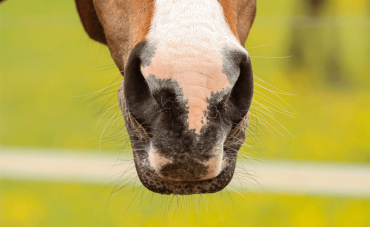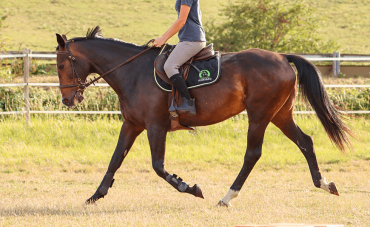What is rhinopneumonitis?
Equine Herpes Virus, also known as rhinopneumonitis, is a highly contagious viral infection caused by a herpes virus.
This infection is extremely widespread in horses, it is considered that nearly 65% of horses are carriers. The particularity of this virus is that it remains "dormant" after infection and a horse infected with the virus will remain so for the rest of its life. Carrier horses do not show clinical signs, but if the infection is "reactivated", the virus can be shed and thus infect other horses.
This mechanism can be compared with that of the "fever blister" in humans, which is also a herpes virus. The virus is often "reactivated" during periods of great stress or fatigue (transport, intense effort, etc.).
There are two main herpes virus species in horses: EHV-1 and EHV-4.
As virus is often referred to as rhinopneumonitis, it is commonly thought to be just a respiratory ailment. However, infections are the cause of 3 main types of symptoms, the frequency of which is linked to the type of EHV:
- Respiratory problems: mainly EHV-4
- Nervous disorders: mainly EHV-1
- Abortions: mainly EHV-1
The symptoms of rhinopneumonitis
Although there are common types of symptoms in rhinopneumonitis in horses, there can be great variability between individuals. In adult horses, the infection may go unnoticed whereas in young horses there may be more marked respiratory problems. As with many viral infections, a high temperature of your horse is a warning signal. In the case of rhinopneumonitis, the temperature can rise up to 41°C.
As seen previously, there are 3 main types of symptoms that we will explain:
Respiratory problems related to rhinopneumonitis
When the respiratory functions are affected, it strongly resembles a flu:
- Coughing
- A drop in appetite
- Fatigue
- Swelling at the member level
- Nasal discharges
Usually, the infection of the horse occurred 2 to 10 days before the onset of these symptoms. These symptoms may persist for a long time after the horses have recovered. This form is the least lethal but can lead to chronic lung damage.
Abortions related to rhinopneumonitis
In the mares in gestation, the equine herpes virus is the principal cause of abortions of infectious origin. Most of the time, no symptoms are observable on the mare and abortion takes place around the third trimester of gestation (9-11 months). Here, the infection of the mare may have occurred up to several months before the abortion.
Finally, the virus can also lead to stillborn or very weak foals at birth which usually die a few days later. These foals, however, remain extremely contagious to other horses.
Neurological disorders related to rhinopneumonitis
In less frequent cases, rhinopneumonitis can cause damage to the horse's nervous system. The nervous disorders that can be observed are quite numerous:
- Musculoskeletal disorders
- Ataxia (lack of coordination of members)
- Partial paralysis
Sometimes the onset of these neurological symptoms can be sudden. Usually, neurological disorders appear two weeks after infection. Horses with the mildest neurological impairment may have a chance of recovery, but if the horse becomes almost completely paralysed, the prognosis will be extremely difficult.
The transmission of rhinopneumonitis
As we have said, rhinopneumonitis is extremely contagious and is transmitted through the respiratory tract. Contamination can occur through different "routes":
- Via direct contact with the nasal discharge and nasal projections of a sick horse.
- Via indirect contact (material, human, air over short distances).
- During an abortion (foetus, placenta...).
As a large proportion of horses carry the virus for life, they can become a source of infection for other horses. This means that an outbreak of rhinopneumonitis can occur in a stable without a new individual arriving. In addition, since the viruses are able to survive for several days in the outside environment, horses that have never been in contact with them can become infected.
The diagnosis of rhinopneumonitis
As in all cases of epidemics, one of the keys to a good diagnosis will be the speed of detection.
To diagnose rhinopneumonitis, the veterinarian can take a blood test or a nasal swab. In the case of an abortion, the foetus, the placenta or a sample from the mare's vagina can be used as samples.
Because of the contagious nature of this disease, it is strongly recommended to test all horses that have been in contact with the sick horse. Regular monitoring of the body temperature of horses at risk is also advisable as fever is an early warning signal.
The treatment of rhinopneumonitis
Today there is no treatment for rhinopneumonitis because it is a viral disease. Usually it is rather a treatment of the symptoms that is done, mainly to try to lower the horse's temperature (often with non-steroidal anti-inflammatory drugs). In some cases anti-virals can be used but the cost is significant and the effectiveness will depend on the individual.
Then depending on the form of the disease the horse has, some adjustments can be made:
- For horses with the respiratory form: they are put to rest for at least 3 weeks after the end of clinical signs to assist the respiratory system to heal.
- For horses with the nervous form: depending on the clinical signs, certain adjustments can be made. It is often essential to place horses in harness to prevent them from falling when they have difficulty standing.
- For mares subject to abortion: once the mare has had an abortion, there is usually no treatment required. There is also no preventive treatment in case the mare has been contaminated.
Preventing rhinopneumonitis
In order to prevent outbreaks, some good practices in stable management exist:
- Limit stress for horses, which is a major risk factor for reactivation of the virus.
- Limit very large groups of horses
- Carry out a quarantine for new arrivals (at least 3 weeks with daily temperature control).
- Separate horses that travel a lot (competition, training) and are therefore in contact with other horses, from horses that move less (broodmares, young horses...).
In order to prevent rhinopneumonitis episodes as much as possible, ask your vet for advice!
A good way to avoid rhinopneumonitis infections will be vaccination.
The very principle of vaccination is to create a good immunity against the virus. This good immunity will have two important roles:
- To protect horses from rhinopneumonitis
- Reduce the excretion of the virus (and thus the contamination of other horses).
Vaccination cannot guarantee 100% protection for a single individual. This is why it is advisable to vaccinate stables (or herds) of whole horses in order to induce group immunity.
It is important to note that although vaccination does not prevent infections, it does reduce the severity and duration of clinical signs. The vaccines that currently exist do not have the same level of effectiveness depending on the clinical forms of the virus: respiratory, abortion, nervous. Vaccination is more effective against the respiratory and abortion forms than against the nervous form.
Vaccination combined with good stable management reduces the risk of creating an epidemic outbreak to a minimum.
We hope we have helped you to better understand rhinopneumonitis in horses.
If you have any doubts about your horse, please contact your veterinarian.
Once again, time is the best ally in controlling rhinopneumonitis epidemics!

